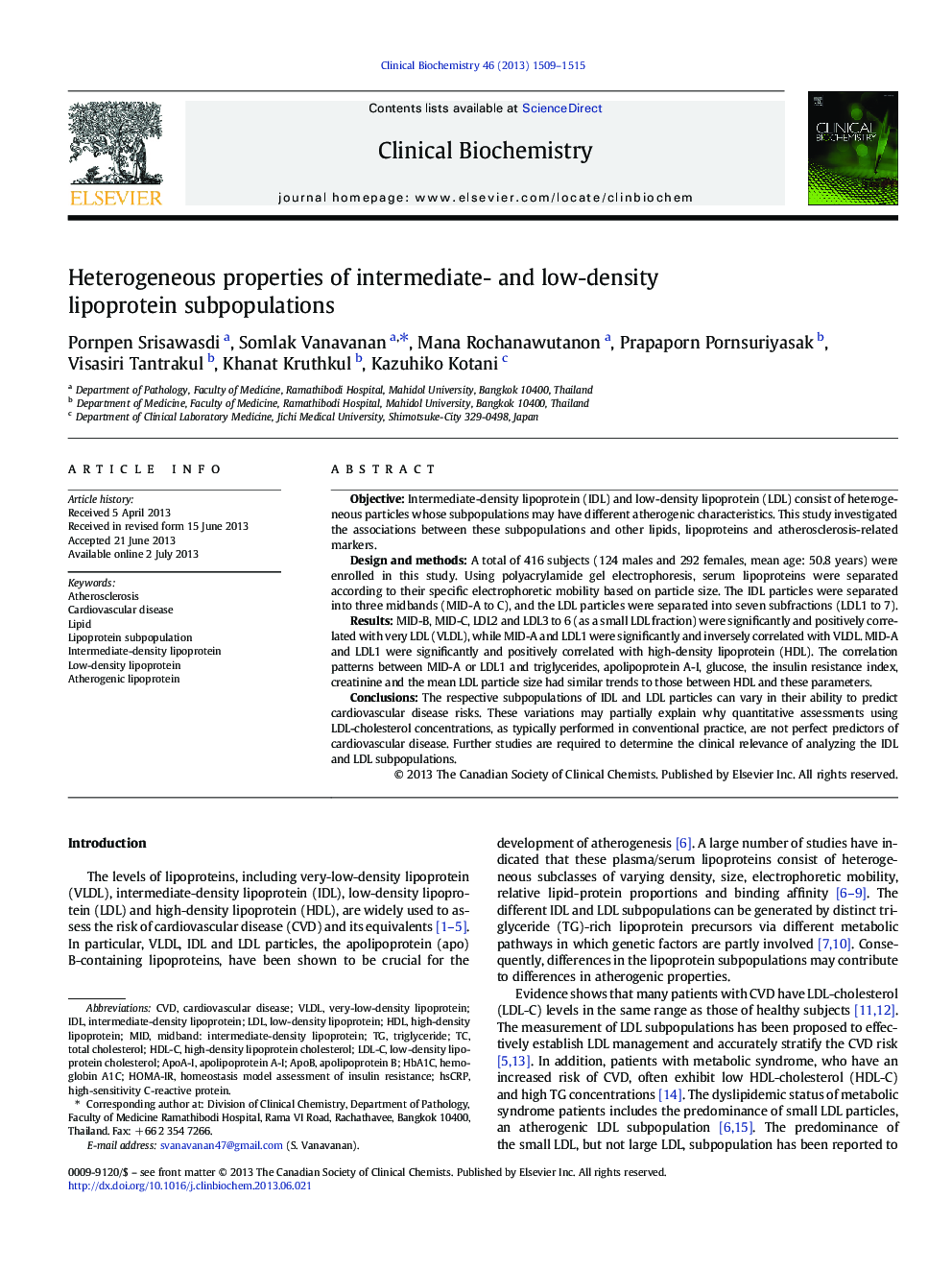| Article ID | Journal | Published Year | Pages | File Type |
|---|---|---|---|---|
| 10817949 | Clinical Biochemistry | 2013 | 7 Pages |
Abstract
The respective subpopulations of IDL and LDL particles can vary in their ability to predict cardiovascular disease risks. These variations may partially explain why quantitative assessments using LDL-cholesterol concentrations, as typically performed in conventional practice, are not perfect predictors of cardiovascular disease. Further studies are required to determine the clinical relevance of analyzing the IDL and LDL subpopulations.
Keywords
IDLVLDLMIDHDLapoBhsCRPHbA1cHOMA-IRHDL-CLDL-CApoA-Ihigh-density lipoproteinAtherosclerosisApolipoprotein A-IApolipoprotein Bhomeostasis model assessment of insulin resistancecardiovascular diseasetriglycerideCVDvery-low-density lipoproteinhigh-density lipoprotein cholesterolIntermediate-density lipoprotein Low-density lipoproteinLDLLipidHemoglobin A1chigh-sensitivity C-reactive proteintotal cholesterolLow-density lipoprotein cholesterol
Related Topics
Life Sciences
Biochemistry, Genetics and Molecular Biology
Biochemistry
Authors
Pornpen Srisawasdi, Somlak Vanavanan, Mana Rochanawutanon, Prapaporn Pornsuriyasak, Visasiri Tantrakul, Khanat Kruthkul, Kazuhiko Kotani,
